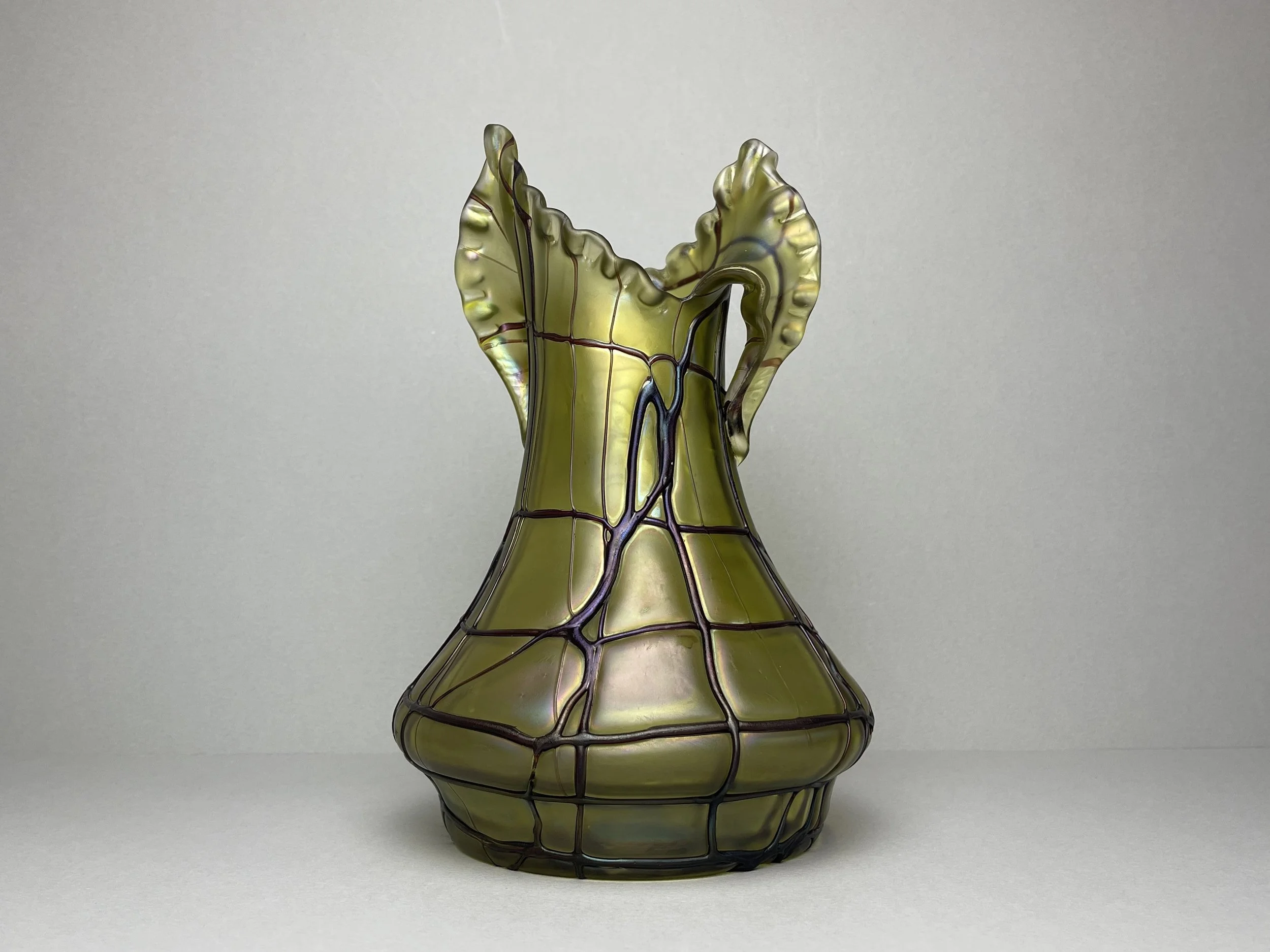
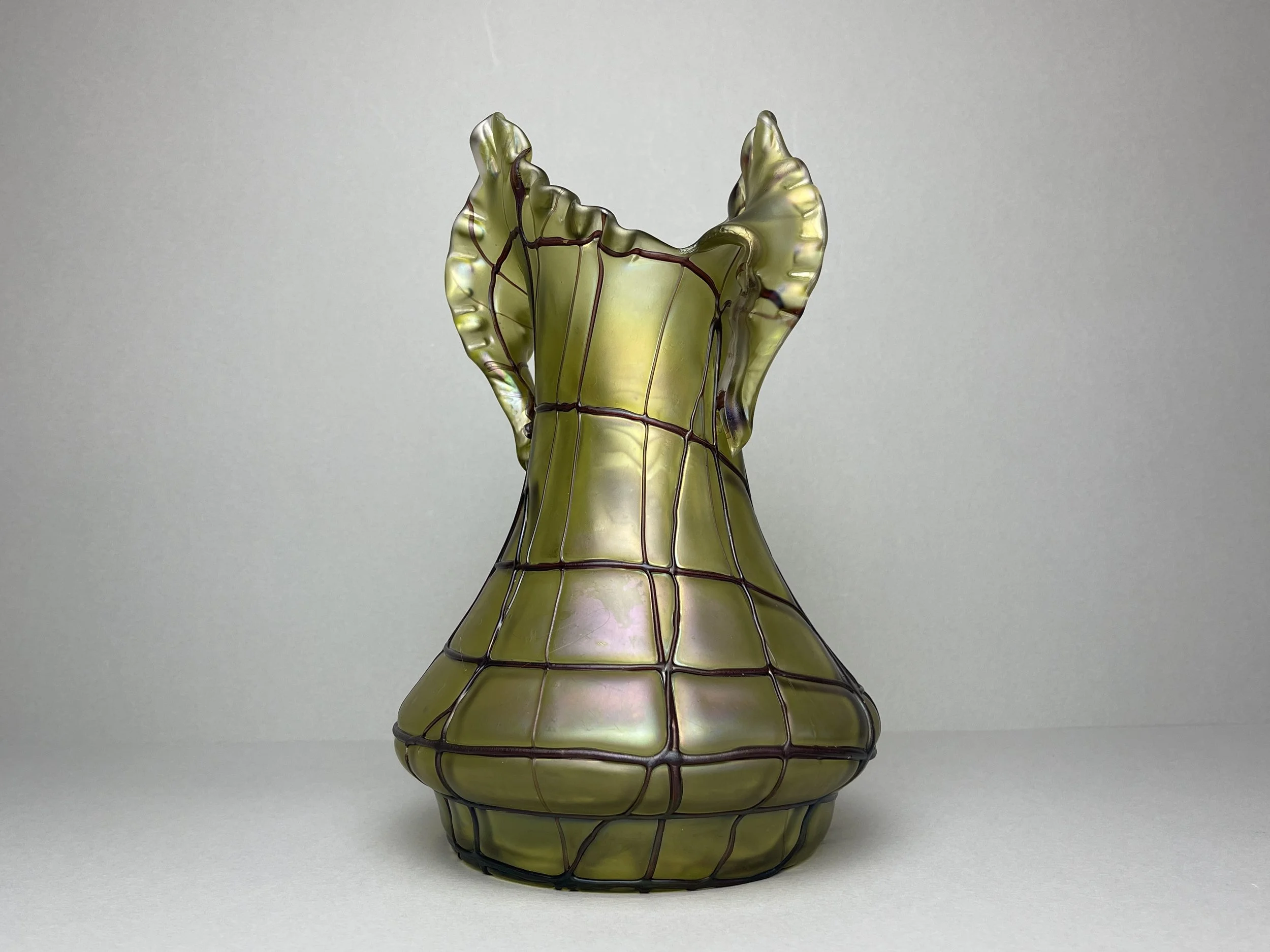
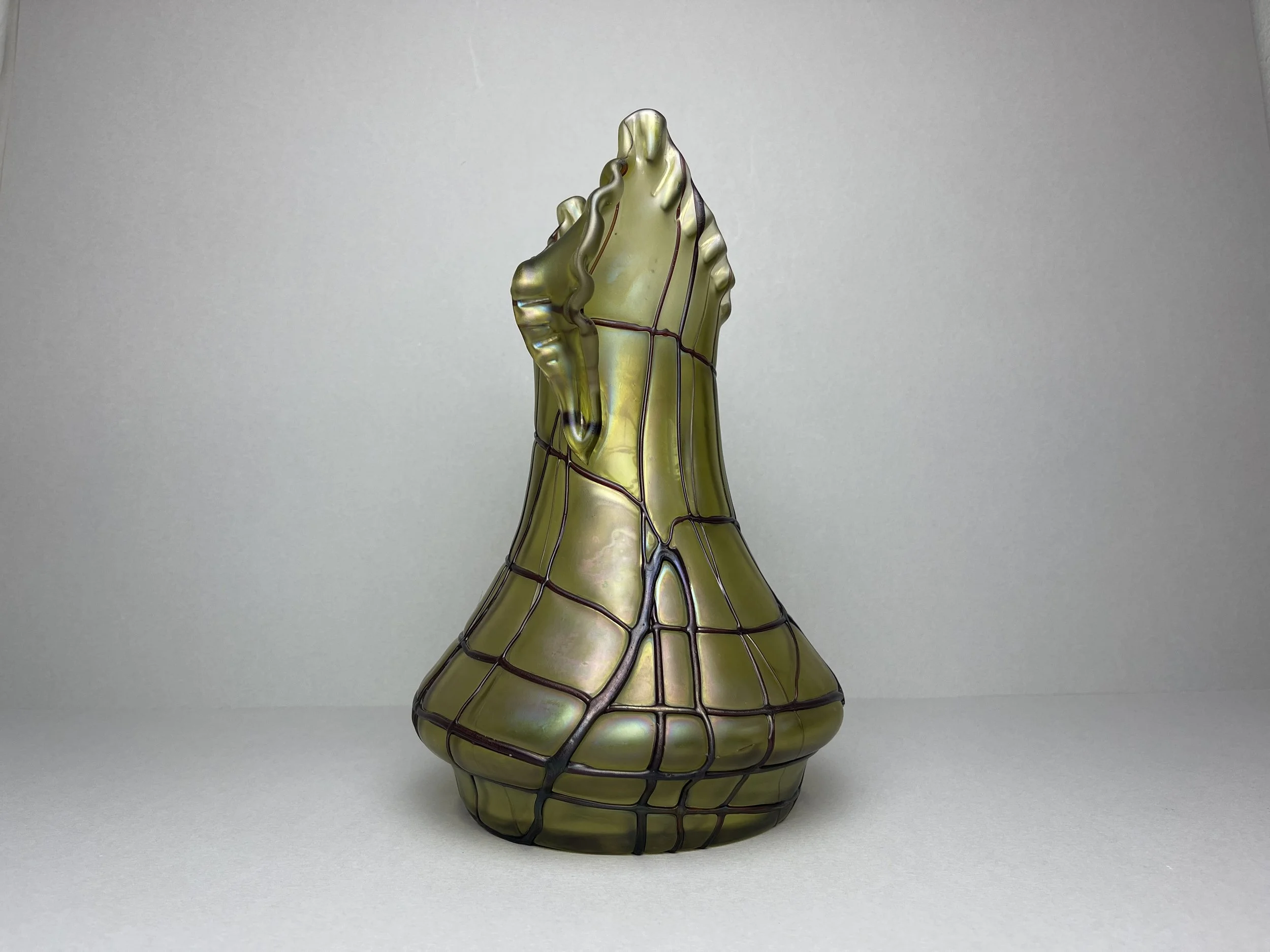

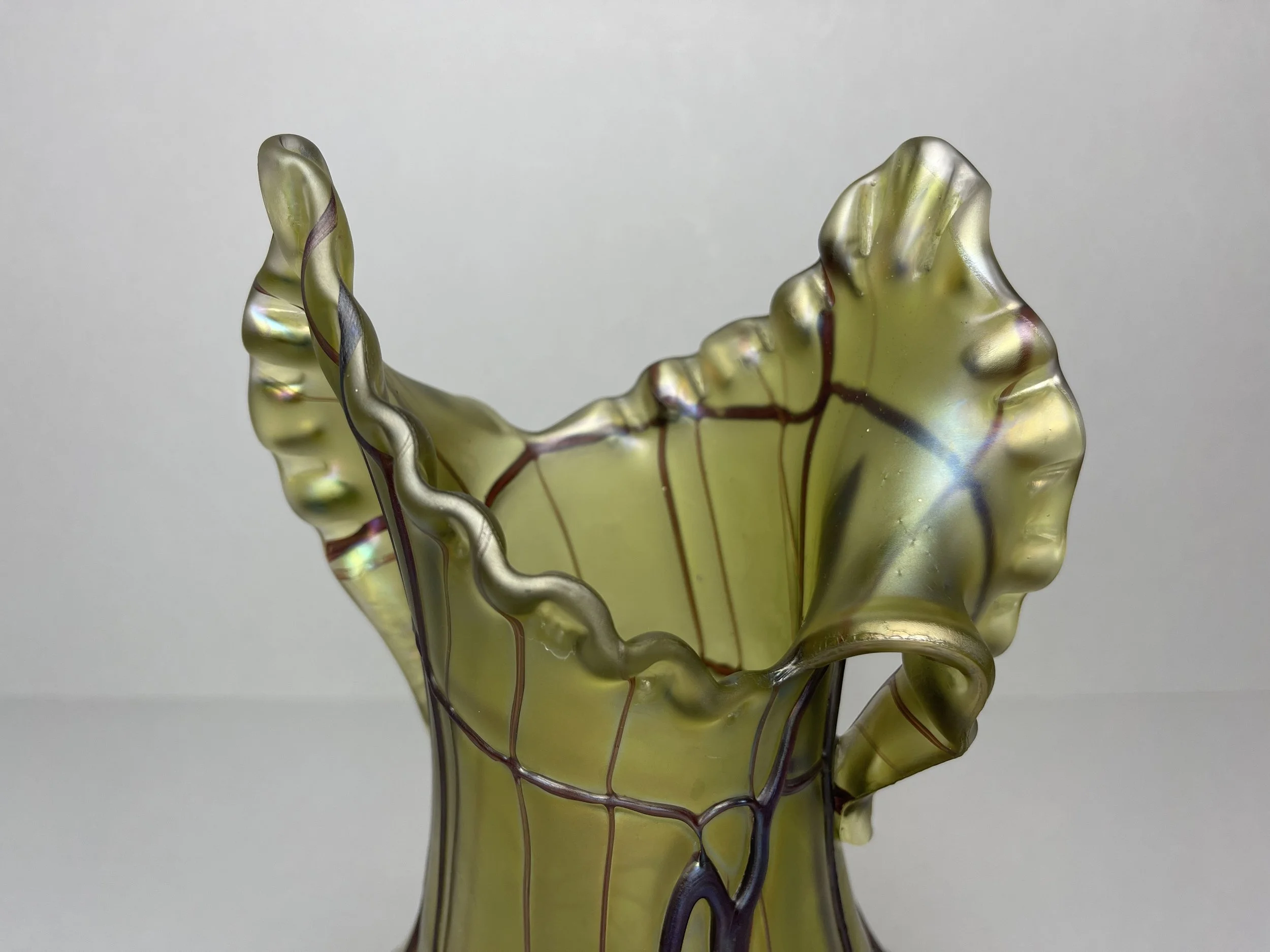

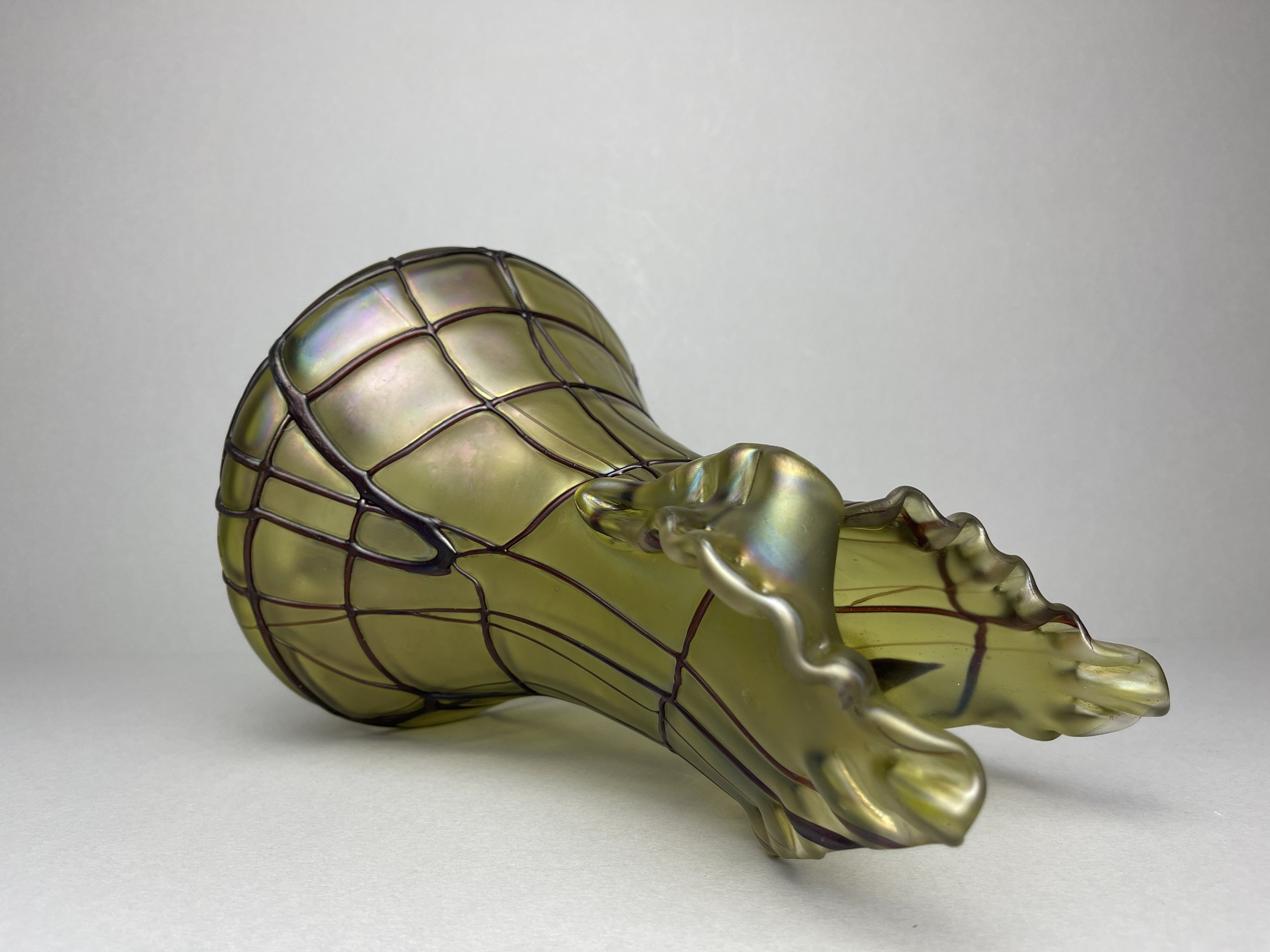
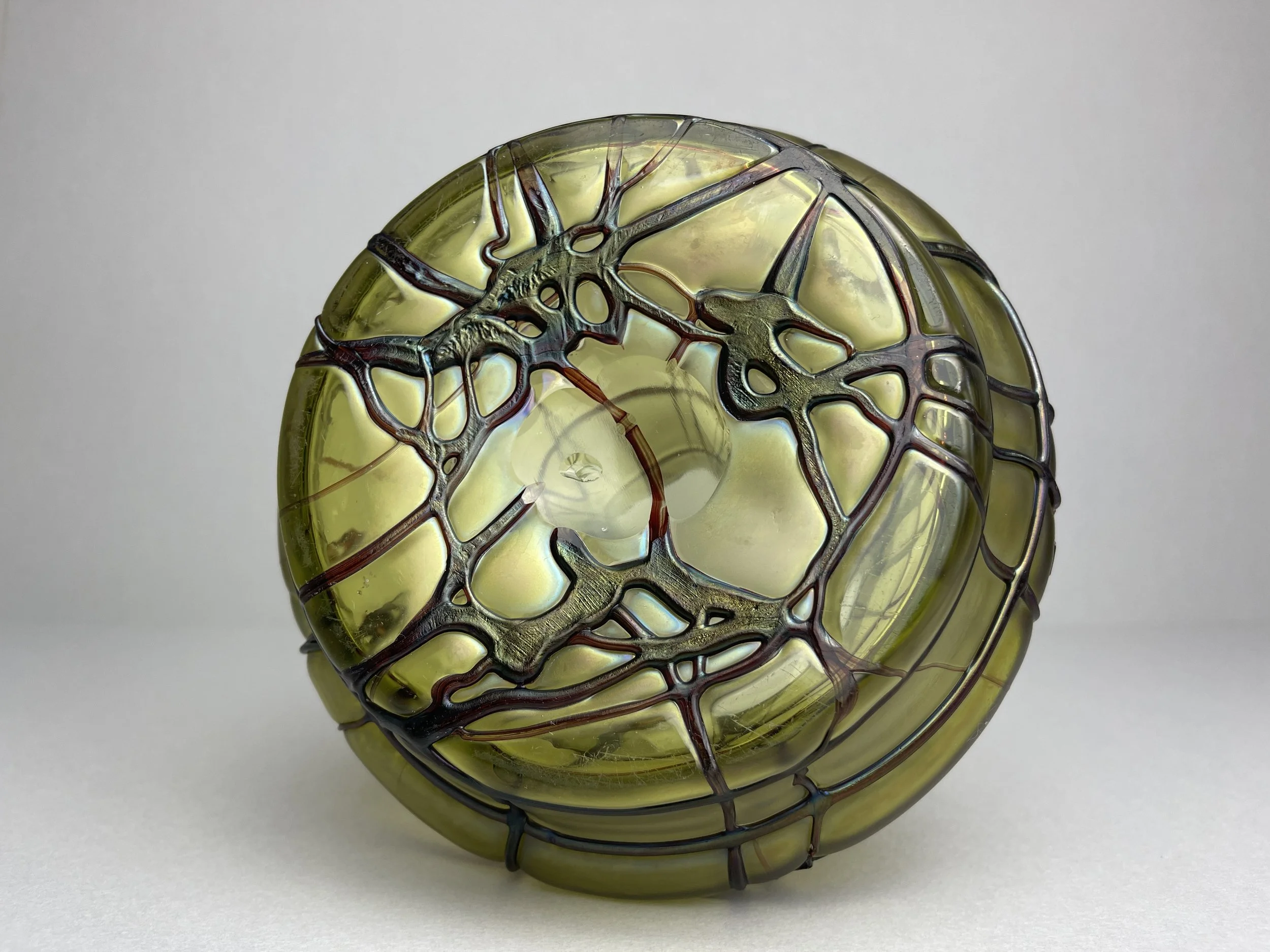
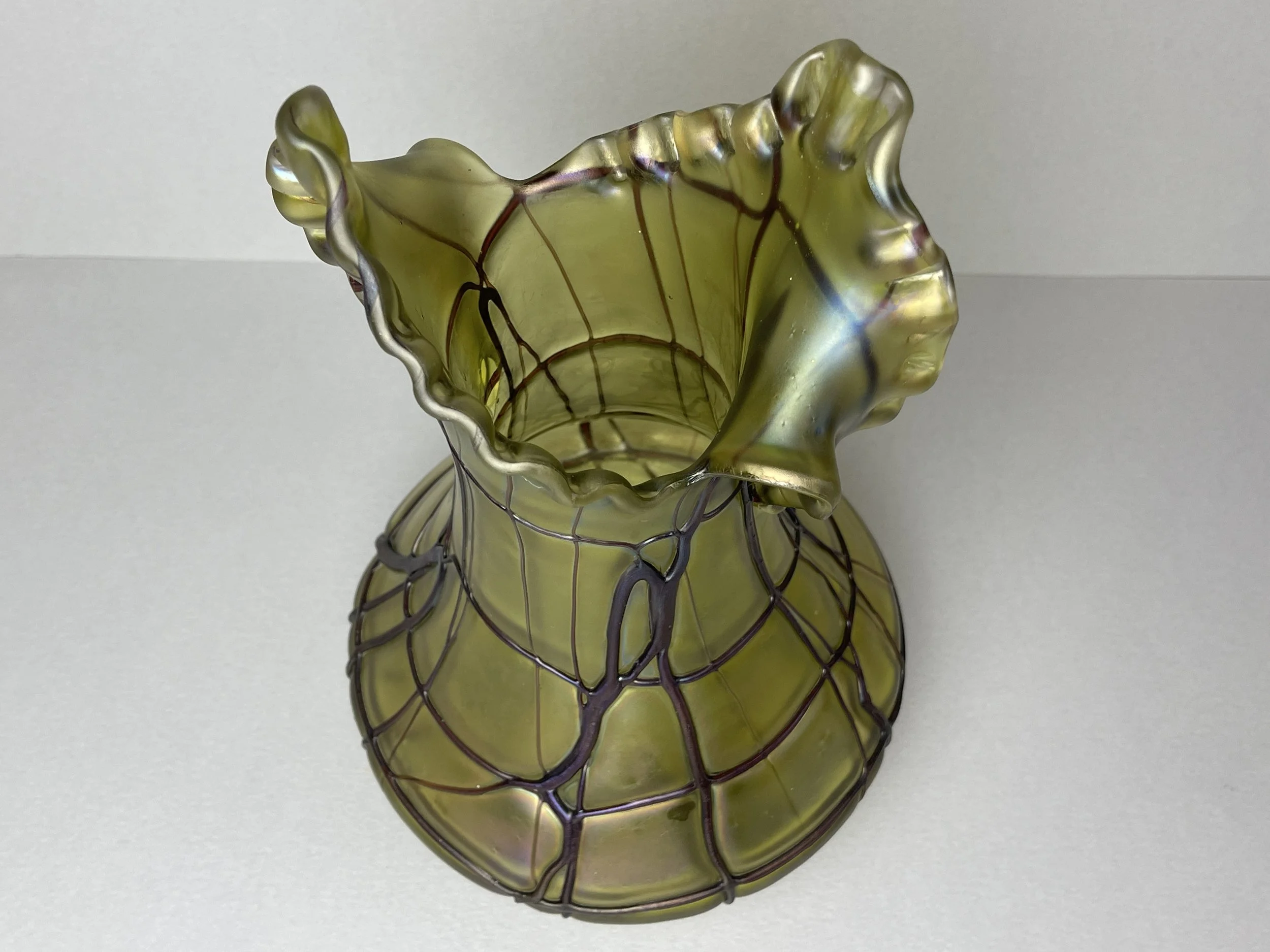
Large Art Nouveau iridescent Pallme- Konig, ‘Patras’ Vase c.1890
Rare and very fine, large Pallme-Konig ‘Patras’ vase, green iridescent, with a thick contrasting applied glass thread motif, known as 'cocooning'. The vase has a cut and turned rim, and is extremely modernist in style by the world renowned Elisabeth glassworks, Wilhelm Habel, Kosten , Teplitz, Bohemia.
Fantastic condition, no chips cracks or repairs.
The Pallme glassworks was founded around 1786 in Steinschonau, Austria, by Ignaz Pallme-Konig. In the 1880s and 1890s, the Pallme-Konig company gained recognition for crafting and exporting high-quality engraved glass and chandeliers. At the turn of the 20th century, they merged with Wilhelm Habel's Elizabethhutte glassworks near Teplitz, and the company was renamed "Glasfabrik Elisabeth, Pallme-Konig, and Habel."
During the Art Nouveau era, the company became known for producing exquisite iridized glass. One of their most notable styles involved winding hot glass trails around iridized glass to form intricate patterns, which were then blown into a mold, pressing the trails into the glass.
The output from the Elizabethhutte glassworks has long been highly regarded in Austria, with this distinctive design style continuing to be produced until the early 1920s. Pallme-Konig vases often feature cuts at the top and folded edges, highlighting the once-molten nature of the glass.
All items are sensitively and minimally cleaned
Any questions please don't hesitate to drop me a message. I am very happy to pass on any additional information, or images you may need, if you are interested in more than one item I can arrange a combined postage price. Many thanks.
All items will be packaged using recycled or reused materials to help minimise any environmental impact.
Please be aware that you are purchasing a vintage item. We mention any obvious defects to the glass such as chips, cracks, etc. in our description but there may also be minor manufacturing faults eg. marks from the mould, straw marks and air bubbles, which is normal for glass of this era.
Rare and very fine, large Pallme-Konig ‘Patras’ vase, green iridescent, with a thick contrasting applied glass thread motif, known as 'cocooning'. The vase has a cut and turned rim, and is extremely modernist in style by the world renowned Elisabeth glassworks, Wilhelm Habel, Kosten , Teplitz, Bohemia.
Fantastic condition, no chips cracks or repairs.
The Pallme glassworks was founded around 1786 in Steinschonau, Austria, by Ignaz Pallme-Konig. In the 1880s and 1890s, the Pallme-Konig company gained recognition for crafting and exporting high-quality engraved glass and chandeliers. At the turn of the 20th century, they merged with Wilhelm Habel's Elizabethhutte glassworks near Teplitz, and the company was renamed "Glasfabrik Elisabeth, Pallme-Konig, and Habel."
During the Art Nouveau era, the company became known for producing exquisite iridized glass. One of their most notable styles involved winding hot glass trails around iridized glass to form intricate patterns, which were then blown into a mold, pressing the trails into the glass.
The output from the Elizabethhutte glassworks has long been highly regarded in Austria, with this distinctive design style continuing to be produced until the early 1920s. Pallme-Konig vases often feature cuts at the top and folded edges, highlighting the once-molten nature of the glass.
All items are sensitively and minimally cleaned
Any questions please don't hesitate to drop me a message. I am very happy to pass on any additional information, or images you may need, if you are interested in more than one item I can arrange a combined postage price. Many thanks.
All items will be packaged using recycled or reused materials to help minimise any environmental impact.
Please be aware that you are purchasing a vintage item. We mention any obvious defects to the glass such as chips, cracks, etc. in our description but there may also be minor manufacturing faults eg. marks from the mould, straw marks and air bubbles, which is normal for glass of this era.